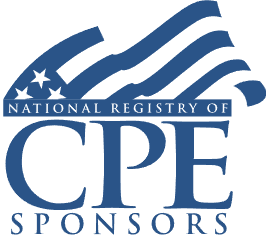Estate Planning for IRAs and Qualified Plans: Trusts as Beneficiaries, Impact of SECURE 2.0, CRTs

Course Details
- smart_display Format
On-Demand
- signal_cellular_alt Difficulty Level
Intermediate
- work Practice Area
Tax and Accounting
- event Date
Wednesday, May 17, 2023
- schedule Time
1:00 p.m. ET./10:00 a.m. PT
- timer Program Length
110 minutes
-
BARBRI is a NASBA CPE sponsor and this 110-minute webinar is accredited for 2.0 CPE credits.
-
BARBRI is an IRS-approved continuing education provider offering certified courses for Enrolled Agents (EA) and Tax Return Preparers (RTRP).
This webinar will address specific estate planning issues with IRAs and qualified plans. Our panel of estate, trust, and retirement planning professionals will cover utilizing trusts as IRA beneficiaries, naming beneficiaries, charitable remainder trusts, Roth conversions, and specific estate tax planning strategies after SECURE 2.0.
Faculty

Prior to joining Boyd & Boyd, P. C., Ms. Tashjian served as Counsel for the Law Office of Lindsey M. Straus, a general practice firm based on Cape Cod. She was a Securities Litigation paralegal for five years at Mintz Levin in Boston, where she was responsible for filing securities class action and SEC cases on behalf of institutional investors. Ms. Tashjian also interned with the Law Offices of Vinca Jarrett & Associates, a small Boston based entertainment firm, culminating in an opportunity to represent the firm at the 2013 Cannes Film Festival.

Mr. Boyd concentrates his practice in the areas of Estate, Trust & Retirement: Planning, Administration & Management, Asset Protection Planning, Business & Succession Planning, Charitable Planning, Elder Law, Special Needs Planning, Tax Law and Trustee Services.
Description
IRAs have always been an excellent vehicle for taxpayers to save for future retirement and sometimes save taxes in a current year. Many taxpayers have accumulated substantial balances in these accounts. Estate planning to minimize taxes paid on these distributions is essential.
Recent changes have curtailed taxpayers' ability to report inherited IRAs over their life expectancy and often require the account be liquidated and taxes paid within 10 years of the decedent's death. SECURE 2.0 opens new opportunities for a “back-door” stretch-out or pseudo stretch-out. Back door opportunities relate to use of CRT for QCDs and as a designated beneficiary of a qualified account, and also for use of Life Insurance with an ILIT structured to replicate something like the old stretch out rules.
Using a trust as a beneficiary of an IRA can still be a viable planning opportunity. There are, however, caveats to consider. For example, naming a trustee who resides in a high-income tax state may result in paying higher income taxes on distributions than may be required. Existing arrangements need a fresh look considering SECURE 2.0.
IRA conversions and rollovers often save tax dollars and administrative burdens. Roth conversions could help mitigate the effects of SECURE 2.0. Rolling 401(k) monies into an IRA often makes sense, but there are special considerations for employer-owned stocks. Trust and estate advisers working with taxpayers holding IRAs must understand how to properly plan to mitigate taxes on these valuable investments.
Listen as our panel of estate planning experts explains how to properly plan for IRAs and IRA distributions and new considerations after SECURE 2.0.
Outline
- Estate planning and IRAs
- SECURE 2.0's impact on estate plans
- Naming beneficiaries
- Trusts as beneficiaries after SECURE 2.0
- Charitable remainder trusts
- Roth conversions
- State tax considerations
- IRA planning strategies
Benefits
The panel will cover these and other critical issues:
- The impact of SECURE 2.0 on estate planning for qualified plans
- Caveats and considerations when utilizing trusts as IRA beneficiaries
- How a Roth conversion might mitigate tax consequences of SECURE 2.0
- State tax considerations for IRA beneficiary trusts
NASBA Details
Learning Objectives
After completing this course, you will be able to:
- Identify how charitable remainder trusts can be used in estate planning before and after SECURE 2.0
- Determine state tax implications for certain IRA heirs
- Decide how SECURE 2.0 impacts IRA beneficiaries
- Ascertain when a trust as an IRA beneficiary could be a valuable planning tool
- Recognize certain caveats of IRA beneficiaries

Strafford Publications, Inc. is registered with the National Association of State Boards of Accountancy (NASBA) as a sponsor of continuing professional education on the National Registry of CPE Sponsors. State boards of Accountancy have final authority on the acceptance of individual courses for CPE Credits. Complaints regarding registered sponsons may be submitted to NASBA through its website: www.nasbaregistry.org.

Strafford is an IRS-approved continuing education provider offering certified courses for Enrolled Agents (EA) and Tax Return Preparers (RTRP).
Related Courses

Final Section 2801 Regs: Covered Gifts and Bequests From Covered Expatriates
Saturday, March 22, 2025
1:00 p.m. ET./10:00 a.m. PT
Recommended Resources
How CPE Can Bridge the Gap Between What You Know and What You Need to Know
- Career Advancement